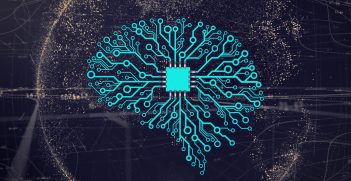Book Review: Power and Progress: Our Thousand-Year Struggle Over Technology and Prosperity

Australia is debating how best to harness artificial intelligence (AI) for economic growth, especially to boost its long-sluggish productivity. In their latest book, Power and Progress: Our Thousand-Year Struggle Over Technology and Prosperity, 2024 Nobel laureates in economics Daron Acemoglu and Simon Johnson challenge the notion that technology inevitably drives social welfare, contending that strong institutions and deliberate policy directions are just as important in shaping equitable outcomes.
Power and Progress explores how technological advances—from medieval agricultural innovations to the Industrial Revolution—have often produced uneven benefits. Acemoglu and Johnson, both economics professors at MIT, maintain that technology is a fundamentally double-edged sword: while it can spur long-term growth, it can also deepen existing inequalities if left unchecked. They question the conventional economic view, which typically examines the link between technology and growth through an “average” lens—focusing mainly on whether innovation boosts overall economic output. Instead, they argue that the effects of technological development extend far beyond such averages; they are fundamentally about the distribution.
They see parallels in today’s digital era, particularly as advancements in AI technologies.
AI as a catalyst for inequality
A central concern in Power and Progress is how AI might widen socioeconomic divides. The authors doubt whether AI-driven automation will necessarily deliver the broad productivity gains some enthusiasts predict. They argue that AI disproportionately benefits those who control its development and deployment—particularly well-resourced corporations, affluent individuals, and authoritarian governments—thereby exacerbating existing power imbalances.
Acemoglu and Johnson view AI as a skill-biased technology that can widen income disparities among workers by favoring those with higher skill levels over those with lower skills. As a direct consequence, low-skilled workers—often performing repetitive tasks—risk being replaced by automation systems. As companies automate to reduce costs—particularly when AI systems are cheaper than labour in the absence of tax reforms—wage polarisation intensifies, especially because high-skilled AI coders and managers are in short supply. Automation, in turn, tends to enrich a narrow elite with capital, data, and expertise, while leaving large segments of businesses and the workforce in precarious positions. This process, they contend, exacerbates already significant inequalities.
Misinformation and Tech’s dark side
Another pressing issue is AI’s capacity to generate and amplify misinformation. Because AI systems rely on vast datasets, those who control data collection and analytics gain the power to manipulate how information is disseminated.
Acemoglu and Johnson compare how authoritarian governments suppress dissent and propagate state-approved narratives by controlling data and algorithms serving political agendas, while monopolistic tech giants shape public discourse by deciding what appears (or disappears) on their digital platforms to maximize their market share and profits. Algorithms optimised to prioritise selected narratives or maximize engagement can promote sensational or misleading content—undermining democratic processes by distorting or limiting the information citizens receive.
As a result, misinformation can shape opinions, sway elections, and even incite hatred, violence or panic. Once individuals realise they have been misled, skepticism and cynicism toward official or public sources can spread rapidly, destabilising societies and fueling widespread distrust. The authors warn that this erosion of trust poses one of the greatest threats to democracy in the digital age.
Emerging Risks
When Power and Progress was written, AI technologies were still relatively “so-so.” But AI is now advancing at breakneck speed. Jeffrey Hinton—widely known as the “Godfather of AI”—and other prominent figures, including Bill Gates and Elon Musk, have voiced concerns that increasingly autonomous AI systems could outpace regulatory oversight, turning them into tools for manipulation or surveillance if misused. These warnings echo Acemoglu and Johnson’s central theme: unchecked technology can reinforce existing power imbalances and socioeconomic inequality.
Harnessing Tech for the Common Good
Despite these dangers, the authors emphasise that AI and other digital tools also hold immense promise. They spotlight breakthroughs such as mRNA vaccine development and renewable energy solutions as evidence that technology can serve the common good—if guided by deliberate choices. They draw on economic and historical evidence to argue that technology’s outcomes hinge on collective decisions. By engaging the public in major technological questions and ensuring transparent governance, societies can reclaim technology for broader prosperity.
Acemoglu and Johnson advocate for policy directions (rather than narrowly-focused industrial policies designed to pick winners) that incentivise corporations and individuals to develop human-centric AI applications—aiming not only to create high-quality jobs rather than simply cutting costs through automation, but also empowering users via data ownership and transparent algorithms rather than relegating them to passive data contributors. To achieve this, they call for stronger legal and regulatory frameworks, increased investment in workers’ skills and human capital, and taxation reforms such as introducing a digital advertising tax or even breaking up tech giants. These measures, they argue, can steer AI toward addressing societal challenges and serving the public good, instead of exacerbating inequality and misinformation. Ultimately, AI should be complementary to human intelligence, which thrives on sophisticated reasoning and creativity underpinned by human tacit knowledge and social intelligence.
However, the authors devote relatively little space to confronting misinformation in authoritarian contexts, where governments may intentionally restrict open data and algorithmic transparency. Addressing this gap could further strengthen their call to “reclaim technology for the common good” in the face of entrenched power structures.
Implications for Australia
Australia’s efforts to incorporate AI into its economy mirror many of Power and Progress’s core themes. Treasurer Jim Chalmers recently announced a AUD$900 million investment to boost productivity after more than a decade of sluggish growth. However, Acemoglu and Johnson caution that money alone may not address structural issues.
For example, to maintain cost competitiveness in value-added manufacturing in the critical minerals sector under the Future Made in Australia Act (an industrial policy), businesses are likely to automate routine tasks—potentially displacing low-skilled workers because of high labour costs. Without inclusive policy directions and institutional arrangements, such as retraining programs and employee protections, the benefits of these AI-driven changes will accrue to a privileged few, further widening existing prosperity gaps between states and individuals.
The authors’ emphasis on ensuring data transparency and directing research funding toward socially beneficial innovation resonates with Australian debates. Tax and grant incentives for human-centric AI, combined with vigilant regulatory oversight, could foster equitable economic growth, protect democratic integrity, and maintain public trust in Australia.
Conclusion
Power and Progress stands as both a cautionary tale and a roadmap to a more equitable, transparent digital future. Acemoglu and Johnson make a compelling case that while AI can spur economic transformation, robust institutions, well-designed policy directives, and collective engagement are crucial to ensuring it benefits everyone. Ultimately, this book is a call to action: technology alone does not dictate our fate; the choices we make—about how to develop, regulate, and share its gains—will. For anyone looking to understand how AI and digital innovation might reshape our world—and how to ensure these transformations serve the common good—this book is required reading.
This is a review of Daron Acemoglu and Simon Johnson’s Power and Progress: Our Thousand-Year Struggle Over Technology and Prosperity (PublicAffairs, 2024). ISBN: 978154170254
Dr Marina Yue Zhang is an associate professor at the Australia-China Relations Institute, University of Technology Sydney (UTS: ACRI). She is the author of three books, including “Demystifying China’s Innovation Machine: Chaotic Order,” co-authored with Mark Dodgson and David Gann (Oxford University Press, 2022).
This article is published under a Creative Commons License and may be republished with attribution.





